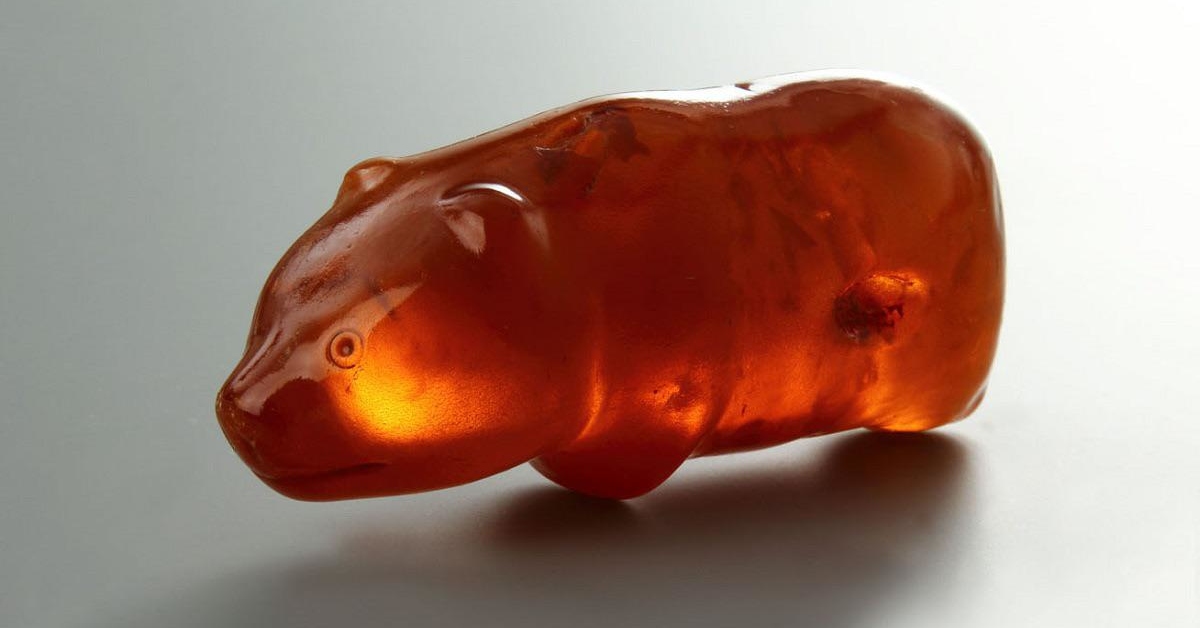Found in a peat bog near Slupsk, Poland, this little amber bear is thought to have belonged to a bear hunter who lived roughly three millennia ago.

The tiny amber bear statue was found in 1887 and archeologists dated it to between 1700 and 650 BC. Some experts think it might be even older as similar amber bears (and other little amber animals like birds and elk) have been found at sites in Jutland, Denmark, dating to the Mesolithic period (12,000-3,900 BC). So the exact time of creation is unknown, but we can rather safely assume it is over three thousand years old.
The object is beautifully carved. While its creator worked the legs only as indicated bulges, the head shows clearly modeled ears, a snout with a carved mouth and two nostrils as well as two circularly framed eyes. There is an opening in the back of the figure just before the hind legs begin. Remains of some dark substance were found on the head, suggesting that the eyes, nose and mouth were originally partially painted.
But how do we know it was used as an amulet? Well, there are signs of abrasion on both sides of the perforation, proving that it was worn on a strap; nor can the bear stand on the bulging legs. A purely decorative function as a necklace seems unlikely, however, since the sculpture, worn as a pendant, hangs upside down and shows the viewer its back. Also, it only unfolds its characteristic silhouette when viewed from the front at an angle. This effect is achieved when, for example, it is held in the hand and presented in this way. A magical function is also suggested by the importance of both the bear and amber in prehistoric imaginations.

After its discovery, the amulet did not stay in Slupsk for long as special protection was sought for the oldest item ever discovered in the Pomerania region of Poland. The museum of Szczecin guaranteed safety, and the amber bear was placed there.
At the end of World War II, with the Germans concentrating more valuable collections, the figurine ended up in Germany and was stored and exhibited at the Kulturhistorisches Museum in Stralsund. In 1972, the director of the National Museum in Szczecin, Władysław Filipowiak, began efforts to have the entire displaced collection together with the bear returned to the Szczecin museum. His endeavours paid out later when in 2009 the object was returned to Poland under an agreement by the governments of Poland and Germany.
When, after its discovery, the amber bear was taken away from Slupsk, locals found it difficult to cope with the loss of “the amulet of happiness”, so in 1924 the city’s amber guild made a copy of it that is on display to the public. Each year, the amber bear is put up for auction, the money raised goes to charity, and a new copy is put into the special display case.
Lucky charm at work.
Sources: 1, 2, 3, 4
